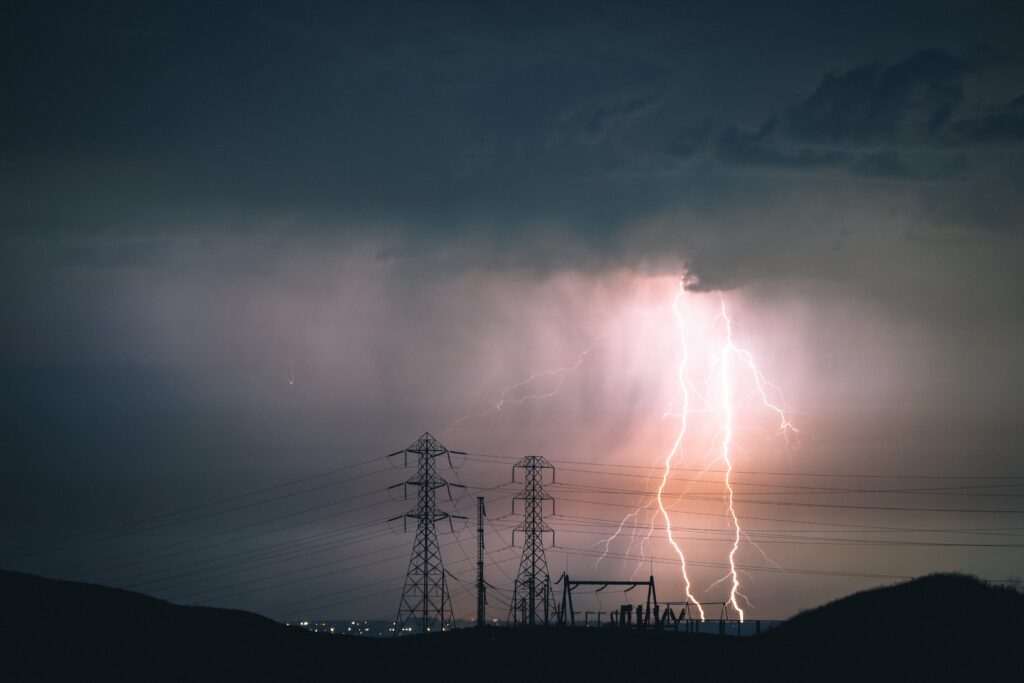Kent and the South East is bracing for a day of treacherous weather this Saturday, with forecasters warning of torrential rain, widespread thunderstorms, and a “significant” risk of surface water flooding that could pose a danger to life.
The Met Office has issued severe weather warnings as a potent band of heavy downpours is expected to sweep northwards across the region from the early hours of Saturday. Experts predict some localized areas could be inundated with 20-40mm of rain within a single hour, while prolonged heavy rainfall could see accumulations reach a staggering 70-100mm in just a few hours. Urban areas, with their extensive hard surfaces, are highlighted as particularly vulnerable to rapid and severe impacts.
Authorities are urging residents to prepare for widespread disruption. A key concern is the potential for communities to become isolated as floodwaters render roads impassable. Travellers face a bleak outlook, with likely delays and cancellations expected across train and bus networks. Motorists are advised to exercise extreme caution, anticipating hazardous driving conditions, significant spray, sudden flooding, and potential road closures.
Beyond travel woes, the severe weather carries the risk of widespread power cuts and disruption to essential services for both homes and businesses. Properties are likely to be hit by rapid flooding, with the potential for structural damage not only from water but also from lightning strikes, hail, and strong winds associated with the thunderstorms.
Crucially, the public is being issued a stark warning regarding floodwater itself: fast-flowing or deep conditions are anticipated in many areas, presenting a direct and serious threat to life.
While the most intense and widespread rainfall is forecast to ease by Saturday morning, the threat is far from over. Scattered heavy showers and isolated thunderstorms are expected to redevelop throughout the afternoon and early evening, covered by an overarching Yellow thunderstorm warning, meaning the region will remain under a significant weather threat for much of the day. Residents are advised to stay updated with the latest forecasts and official guidance.
What To Do
- Avoid travel: Prepare to avoid road travel during potentially dangerous conditions. If you must travel, drive with extreme caution and be alert for hazards.
- Stay out of floodwater: It is not safe to drive, walk, or swim through floodwater. Avoid it where possible. If you are caught in fast-flowing or deep water, call 999 immediately and wait for help.
- Prepare a flood kit: Assemble a kit with essential items such as insurance documents, a torch with spare batteries, a first aid kit, prescription medicines, and supplies for family and pets (warm, waterproof clothes, blankets, food, and water).
- Stay indoors during storms: Being outside in high winds or lightning increases the risk of injury. Stay indoors as much as possible. If caught outside, avoid sheltering near buildings, trees, or other structures that could be struck by lightning. If you hear thunder and cannot reach a safe enclosed shelter (like a car), crouch in a ball-like position with your head tucked in and hands over your ears, making minimal contact with the ground and away from electrical conductors.
- Secure outdoor items: Before the winds pick up, secure any movable objects or temporary structures like bins, garden furniture, trampolines, tents, gazebos, sheds, and fences.
- Check on vulnerable individuals: Consider checking on older people, those with underlying health conditions, and those who live alone, as they may need support with food and medical supplies.
- Seek medical advice: If you are concerned about your health or someone you know, contact NHS 111.
- Stay informed: Keep updated with local weather forecasts and follow advice from emergency services and local authorities.
